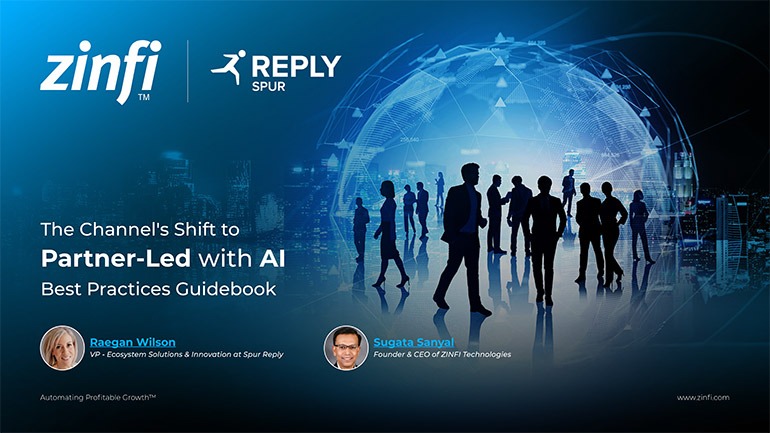Best Practices Articles

How to Be a Rock Star in the Channel Marketing World
If you think marketing is hard, try channel marketing. Try marketing to and through a group of very important people who do not report to you, have their own business focus and agenda, and may be loyal to your competitors but also sell a lot of your products.
What do you do? How do you make changes to engage your organization and drive results so that you become a rock star in your channel marketing organization? It can be done. We’ve certainly seen many of our clients achieve channel marketing stardom by following five core principles in a structured way. You can do the same and take your organization to a whole new level of performance.
Before we take a deep dive into the five core success factors, let’s talk a little bit about the nature of channel and the core marketing activities associated with it. The channel actually varies considerably from industry to industry. In the business to consumer (B2C) segment, it consist primarily of franchises and agents (e.g., insurance and real estate). In the business to business (B2B) segment the channel may also include franchises, but it will also include independent organizations like resellers, value added resellers, system integrators, engineering houses, installers and so on. The channel is diverse, but what I am going to cover here are themes that remain consist across verticals, as well as channel partner types.
Channel marketing has basically three core motions:
- “Marketing to” the partner, where the focus is on informing the channel partner or dealer about a vendor’s products, process and programs. Partner recruitment, training, engagement and management programs tend to be most important here.
- “Marketing through” the partner, where a vendor markets to end users through a partner network by leveraging their list. This is typical in the technology and manufacturing segments.
- “Marketing with” the partner, where a vendor works with an alliance partner, and together they drive solutions to market by running various joint campaigns. “Intel Inside” is a great example of this category in technology segment.
- Plan beyond a quarter. Most organizations that are large in nature tend to operate their business around fiscal quarters, which are typically the focus for budget approval and spending. However, it is rare for effective channel marketing activities to be planned, rolled out and measured within a quarter. We recommend you plan at least six months in advance instead, splitting the year into a first and second half.
- Simplify what you do. Most channel marketing programs really don’t work because those in control fail to take a long-term view, provide insufficient resources and/or execute poorly. The way around these pitfalls is to focus on a few programs that work and implement them across multiple countries and geographies. Don’t succumb to the temptation to create unique programs for every single region. Most of a vendor’s channel partners tend to behave the same way from region to region. For the sake of simplicity and ease of execution, resist the mindset that claims each region is different.
- Align rewards. Many channel marketing vendors have decent incentives for partners, like rewards and rebates, in place. However, we’ve found that it’s rare for those incentives to be fully aligned with channel programs. Once you put money into specific programs, partners know you are serious about those programs and they tend to behave very differently. Program-aligned incentives might involve providing partners with a break on your training costs, granting additional margin for certain deal types, or offering sales people rewards for achieving or exceeding quotas for certain category of products.
- Celebrate success. You and your team will put in a lot of hard work to make the top three success factors we’ve already discussed here a reality. However, if you don’t share news of your successes both internally and across the channel network, you miss two big opportunities. First, you lose the opportunity to engage with your own internal stake holders in promoting success. Second, you stop creating excitement among the partner base. Most partners tend to watch how programs are working for other partners; once they see success they believe they can replicate, they engage. The lesson here is to promote whatever relevant successes you can to build engagement and enthusiasm among both partners and colleagues.
- If it ain’t broke, don’t fix it. This may sound like a cliché, but it’s a very important principle to remember when it comes to channel. We channel marketers can be our own worst enemies at times. We have this creativity bug that compels us to keep trying different things. Of course you should try different things if a program is not working, but once you figure out a program that is popular and is driving consistent results, don’t mess with it. Channel marketing is really hard, so congratulate yourself for figuring out how to succeed and keep running successful programs until they stop delivering.
Best Practices Guidebook
 Modernizing Channel Marketing: AI and Ecosystem Enablement Best Practices
Modernizing Channel Marketing: AI and Ecosystem Enablement Best PracticesDownload for FREE
 The Channel’s Shift to Partner-Led With AI Best Practices
The Channel’s Shift to Partner-Led With AI Best PracticesDownload for FREE
 Hyperscalers, ISVs, and AI: Shaping the Future of B2B Software Distribution
Hyperscalers, ISVs, and AI: Shaping the Future of B2B Software DistributionDownload for FREE
 Definitive Guide to a Partner Ecosystem-First Sales Strategy
Definitive Guide to a Partner Ecosystem-First Sales StrategyDownload for FREE
 The Partner-Led Digital and AI Transformation Best Practices
The Partner-Led Digital and AI Transformation Best PracticesDownload for FREE
 Startup Talent Recruitment: Hiring Missionaries, Not Mercenaries
Startup Talent Recruitment: Hiring Missionaries, Not MercenariesDownload for FREE
 The Future of Partner Relationship Management with AI in Partnerships
The Future of Partner Relationship Management with AI in PartnershipsDownload for FREE
 Cybersecurity for the 99%: Strategies from the Frontline
Cybersecurity for the 99%: Strategies from the FrontlineDownload for FREE
 Mastering Partner Relationships: A Strategic Approach to Business Growth
Mastering Partner Relationships: A Strategic Approach to Business GrowthDownload for FREE
 Mastering Partner Relationship Management: Keys to SaaS Channel Success
Mastering Partner Relationship Management: Keys to SaaS Channel SuccessDownload for FREE
 Navigating the AI Revolution: Guide for Partners in the Microsoft Ecosystem
Navigating the AI Revolution: Guide for Partners in the Microsoft EcosystemDownload for FREE
 Mastering the Modern Buyers Journey: Sales Leader’s Guide to AI & Engagement
Mastering the Modern Buyers Journey: Sales Leader’s Guide to AI & EngagementDownload for FREE










